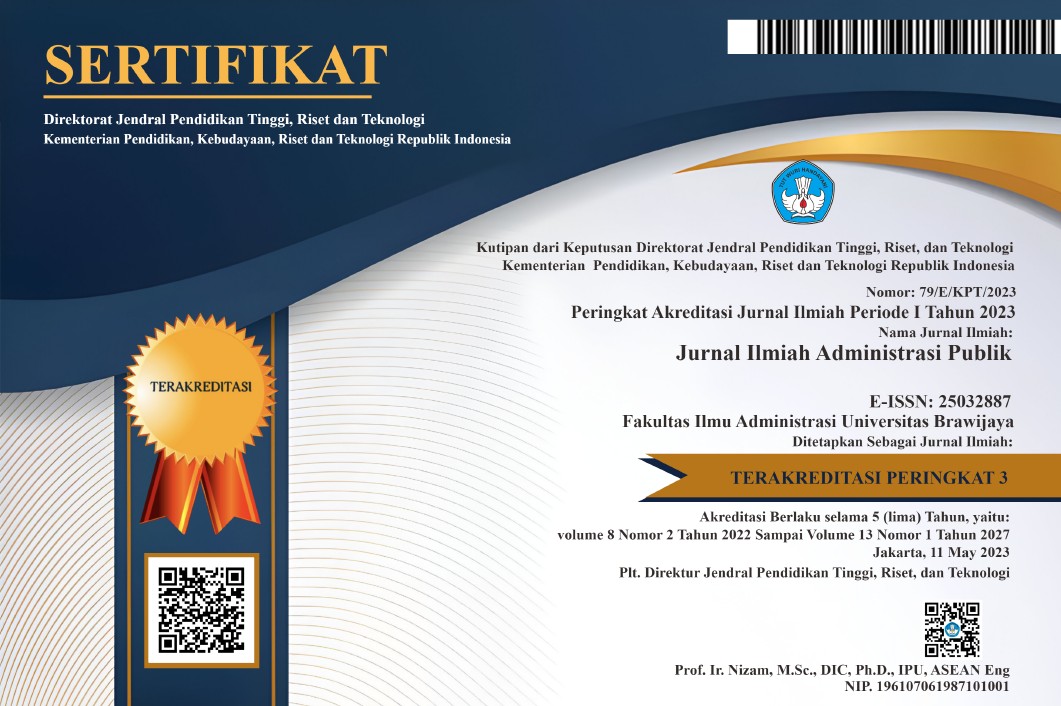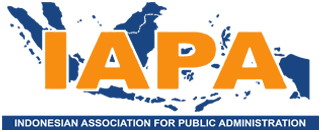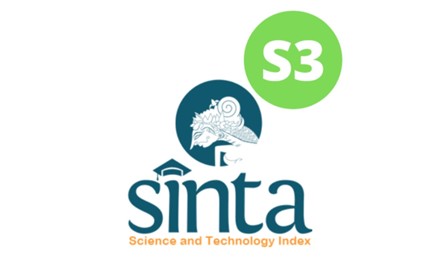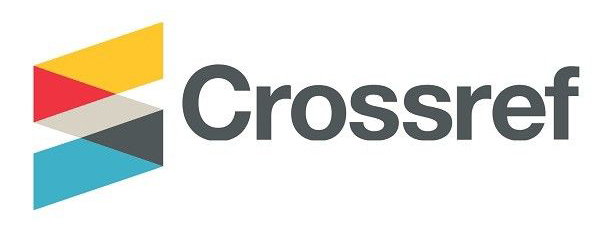Kluster Wilayah Penanggulangan Kemiskinan di Kabupaten Malang
DOI:
https://doi.org/10.21776/ub.jiap.2020.006.02.10Keywords:
poverty, policy review, cluster analysis, Malang RegencyAbstract
Malang Regency has a diverse socio-economic conditions and environments. It is the second largest area in East Java Province. This paper aims to examine the strategy of poverty alleviation in Malang by dividing the 33 suburbs in Malang into clusters. By doing so, the government is expected to choose the best policy strategy to reduce poverty in Malang Regency. This quantitative descriptive study used the 2018 Malang Regency in Numbers. Result show that Malang Regency is divided into three different clusters and each cluster has specific programs and activities of poverty alleviation which is adjusted to the economic potential of the suburbs. The first priority of poverty resolve is cluster 2 followed by cluster 1 and cluster 3, respectively. The proposed activities in reducing poverty are not only to improve and develop the physical quality of the settlements, but also to provide skills to the poor to improve the socio-economic conditions of the community.References
Buchori, I., Manullang, O. R., & Basuki, Y. (2007). Buku Ajar Metode Analisis Perencanaan. [Tersedia pada Universitas Diponegoro.]
BPS Kabupaten Malang. (2018). Kabupaten Malang Dalam Angka (2018th ed.). Malang: Badan Pusat Statistik.
Mudrajad, Kuncoro. (2000). Ekonomi Pembangunan: Teori, Masalah, dan Kebijakan. Yogyakarta: Unit Penerbit dan Percetakan AMP YKPN.
Ningsih, Mega Puspita. (2011). Analisis Dampak Bantuan Program Penanggulangan Kemiskinan Terhadap Kehidupan Masyarakat Miskin di Desa Pait Kecamatan Kasembon Kabupaten Malang. Skripsi, Jurusan Ekonomi Pembangunan, Fakultas Ekonomi, Universitas Negeri Malang, Malang.
Putra, C. K. (2013). Pengelolaan Alokasi Dana Desa Dalam Pemberdayaan Masyarakat Desa (Studi pada Desa Wonorejo Kecamatan Singosari Kabupaten Malang). Jurnal Administrasi Publik, 1(6), 1203-1212.
Putriana, U., Setyawan, Y., & Noeryanti. (2016). Metode Cluster Analysis Untuk Pengelompokan Kabupaten/ Kota Di Provinsi Jawa Tengah Berdasarkan Variabel Yang Mempengaruhi Kemiskinan Pada Tahun 2013. Jurnal Statistika Industri Dan Komputasi, 1(1), 38–52.
Rahmawati, L., Abadyo, & Lestari, T. E. (2013). Analisis Kelompok Dengan Menggunakan Metode Hierarki Untuk Pengelompokan Kabupaten/ Kota di Jawa Timur Berdasar Indikator Kesehatan. Skripsi, Program Studi Matematika, FMIPA, Universitas Negeri Malang, Malang.
Satria, Dias. (2009). Strategi Pengembangan Ekowisata Berbasis Ekonomi Lokal dalam Rangka Program Pengentasan Kemiskinan di Wilayah Kabupaten Malang. Journal of Indonesian Applied Economics, 3(1), 37-47.
Sen, Amartya. (1999). Development As Freedom. Oxford: Oxford University Press.
Simamora, Bilson. (2017). Analisis Cluster. Diakses pada tanggal 13 Desember 2019, dari https://www.bilsonsimamora.com/multivariat/cluster-analysis/
Soesilo, Y. H., Suman, A., & Kaluge, D. (2008). Penyebab Kemiskinan Masyarakat Tani (Studi di Dusun Ngebrong, Desa Tawangsari, Kecamatan Pujon, Kabupaten Malang). Journal of Indonesian Applied Economics, 2(1), 57-67.
Downloads
Published
Issue
Section
License
If your paper is accepted, the author identified as the formal corresponding author for the paper will receive an email prompting them to login into Author Services; where via the JIAP Author Licensing Service they will be able to complete the license agreement on behalf of all authors on the paper.














